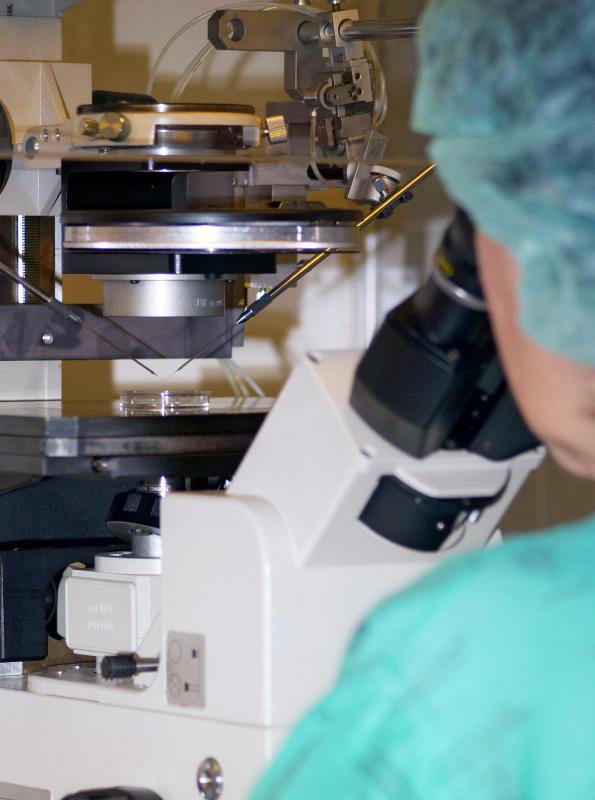At TheHealthBoard, we're committed to delivering accurate, trustworthy information. Our expert-authored content is rigorously fact-checked and sourced from credible authorities. Discover how we uphold the highest standards in providing you with reliable knowledge.
What is a Hemangioendothelioma?
A hemangioendothelioma is a very rare type of tumor that appears inside a blood vessel. A mass can potentially form anywhere in the body, but the condition most commonly affects blood vessels near the skin or in the liver or spleen. A hemangioendothelioma is typically a slow growing benign tumor that does not cause major symptoms, but it can potentially turn cancerous and lead to major health complications. Treatment may involve taking medications to slow new cell growth or surgery to remove the damaged blood vessel. If cancer is present, a person may need additional surgeries, chemotherapy, or radiation treatments.
The exact causes of hemangioendothelioma are not well understood, but most tumors arise from existing benign lesions called hemangiomas. A hemangioma may be present at birth due to a genetic mutation or fetal injury. Some people develop lesions later in life following exposure to certain toxic chemicals, chronic diseases, or autoimmune conditions that severely compromise the immune system. Exactly how and why hemangioendotheliomas develop from some lesions is not known.

A person may be able to see a hemangioendothelioma if it is very close to the skin. It usually looks like a raised, soft, dark red bump that is not itchy or tender. Masses are most often seen in the head or neck, but it is possible to develop a tumor in the arm, leg, torso, or elsewhere on the skin surface. A growing hemangioendothelioma in the liver or spleen may not cause any symptoms until it actually becomes cancerous and starts damaging tissue. Resulting problems may include fatigue, abdominal pain, easy bleeding, swollen lymph nodes, and frequent illness.

A doctor can detect a cutaneous hemangioma or hemangioendothelioma with a simple physical exam. Deep tumors may be found through imaging screens such as ultrasounds and computerized tomography tests. Once a mass is discovered, a blood sample and tissue biopsy are usually needed to check for the presence of cancer. Treatment decisions are made based on the patient' symptoms and the likelihood of cancer starting to spread.

If a small hemangioendothelioma is well isolated and does not show signs of being cancerous, a doctor may choose to avoid treating it right away. Instead, the patient may be instructed to attend regular checkups so changes in the mass and symptoms can be monitored. Some benign tumors respond well to anti-inflammatory drugs and medications designed to stop the growth of new vascular tissue. Surgery may be considered if a tumor starts to cause tissue damage to the skin or an internal organ.

Cancerous hemangioendotheliomas are removed surgically whenever possible. An organ transplant might be needed if the tumor has caused severe, irreversible damage. If cancer spreads, several rounds of chemotherapy and radiation are often attempted to rid the body of cancer. The prognosis can vary on a patient-to-patient basis, but many people do recover when their conditions are discovered and treated early.
AS FEATURED ON:
AS FEATURED ON:

















Discuss this Article
Post your comments